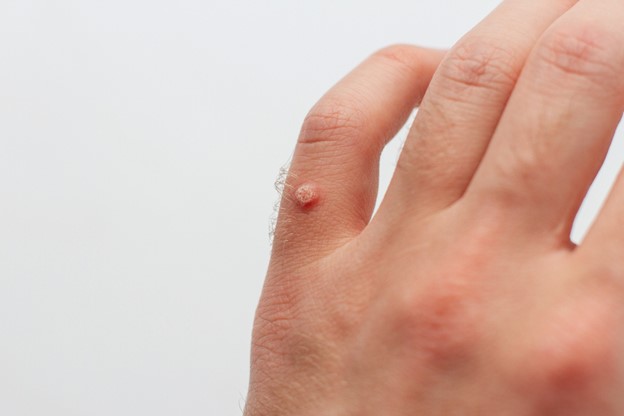Have you ever wondered what those small, pesky bumps on the skin are? Often, they are warts, a type of common skin growth. These bumps are caused by the human papillomavirus (HPV). Warts can appear on different parts of the body and can affect anyone, though they are notably more common in children. They are generally harmless but can be bothersome and may cause discomfort. In this blog, we will explore what causes warts, how they spread, recognizable symptoms, effective wart removal treatments, and ways to prevent them.
What You Need to Know About Warts
Human papillomavirus is the virus behind those troublesome warts. It enters the body through tiny cuts in the skin and leads to the development of these skin growths. There are various types of skin warts, including common warts on the hands and knees, warts on feet (known as plantar warts), and warts on face and neck, which need extra care because of their location.
Common types of warts:
- Common warts: Typically found on hands and fingers. They are rough to the touch.
- Plantar warts: These appear on the soles of the feet and can be painful due to pressure.
- Flat warts: Smoother and often found on the face and forehead.
These growths spread through both direct and indirect contact. For instance, touching a wart and then touching another part of your body can cause a new wart to appear. They can also spread by sharing personal items like towels or razors.
Certain factors increase the risk of developing warts. These include age—children and teenagers are more prone—an existing condition affecting the immune system, and skin injuries that provide entry points for the virus.
Treatment Options for Wart Removal
If you’re dealing with warts, you’ll be pleased to know there are several ways to tackle them. Over-the-counter (OTC) options include skin tag and wart remover products containing salicylic acid. When selecting these, follow the instructions carefully to avoid irritation.
Professional treatments for wart removal are available for stubborn cases. These methods include:
- Cryotherapy: This involves freezing the warts off using liquid nitrogen.
- Excision: A procedure where the wart is cut out by a dermatologist.
- Immunotherapy: Boosting the body’s immune system to fight the virus causing the warts.
Sometimes, it is important to seek a dermatologist’s advice, especially when warts are persistent, spread, or are located on sensitive areas like the face or genital regions.
Let’s clear up some common misconceptions: Home remedies like applying duct tape or garlic are often touted as wart removal solutions. These may not work for everyone, and it’s essential to focus on reliable methods. Also, while boosting your immune system can’t singlehandedly get rid of warts, a balanced diet and healthy lifestyle can help prevent them from returning.
Preventive Measures and Coping with Social Impact
Prevention is key to keeping warts at bay. Here’s how to protect yourself:
- Practice good hand hygiene by washing regularly with soap and water.
- Avoid sharing personal items like towels, socks, or shoes.
- Wear protection, like flip-flops, in communal showers or swimming areas.
For those dealing with visible warts, it’s natural to feel self-conscious. Social pressures can sometimes affect confidence. Remember, warts don’t define you. Many people have them, and they are generally harmless.
Parents can play a proactive role by teaching their kids about prevention and proper skin care. Kids get warts too, and understanding how they spread will help protect your child.
In conclusion, while warts are usually benign, taking steps for early intervention is beneficial. Proper treatment and prevention can help manage them effectively, ensuring your skin stays healthy and wart free.

